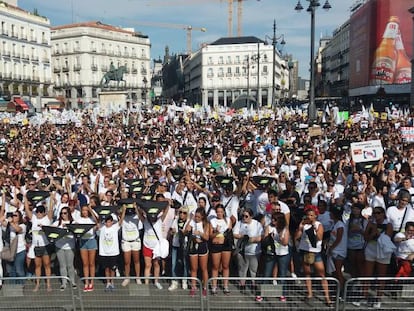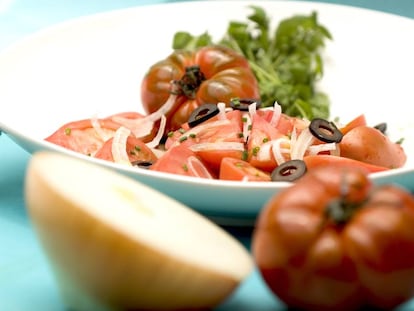The vegan era, or the end of carnal pleasures
In Spain, there are now millions of “flexitarians,” vegetarians and vegans, but while meat consumption is falling, industrial farming is on the rise
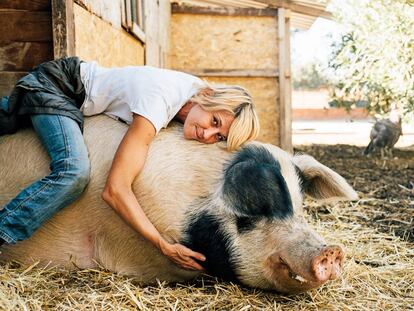
Health, sustainability and respect for other living creatures are the three main pillars of the argument for reducing or eliminating animal products from our diet. As an increasing number of people not only turn vegan, but also actively promote veganism as a lifestyle, the food industry is taking note. In Spain, there are now millions of “flexitarians,” vegetarians and vegans, but while meat consumption is falling, industrial farming is on the rise.
There is always a warm welcome for visitors to Rocío Cano and Pablo Jurado’s home, not just from the couple themselves but also from their three dogs, who greet you at the door with boundless affection. And once inside, a trio of felines offers a rather more reserved welcome.
Rescued and adopted, the family of six cats and dogs are the only animals ever to cross the threshold of this Madrid apartment. Rocío and Pablo are vegans, as are their daughters Antía, 7, and Navia, 4. Like an increasing number of children, the girls have never tried meat, eggs or dairy.
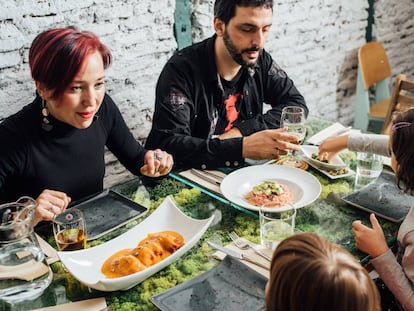
“There is a lack of information and stigmatization,” says Cano, who explains that they decided to look for a vegan-friendly pediatrician for their daughters, who now take their own food to school. “And the criticism is usually contradictory. They say we only eat lettuce and that being a vegan is expensive. It’s neither more expensive nor more complicated. It’s about being versatile in the kitchen and cooking something other than a chickpea stew.”
Although a recent trend, the habit of eating less meat – or no meat at all – is on the rise in Spain. You can see evidence of it everywhere: in restaurants, stores, on the TV and in magazines, as well as on Instagram, where pictures of so-called “superfoods” abound.
The consultancy firm Lantern did a survey of 2,000 people in Spain in 2017, and found that 6.3% consider themselves flexitarians – which means they generally avoid meat but have not totally turned their backs on it. Vegetarians, who eat dairy, eggs and honey, account for 1.3%. And at the far end of the spectrum, 0.2% are vegan, avoiding any product that might be linked to the slaughter of animals, including clothes and cosmetics. In total, 7.8% of Spaniards over the age of 18 – or more than 3.6 million – are driving a market that is predicted to be worth €4.4 billion globally by 2020.
So which Spaniards are we talking about?
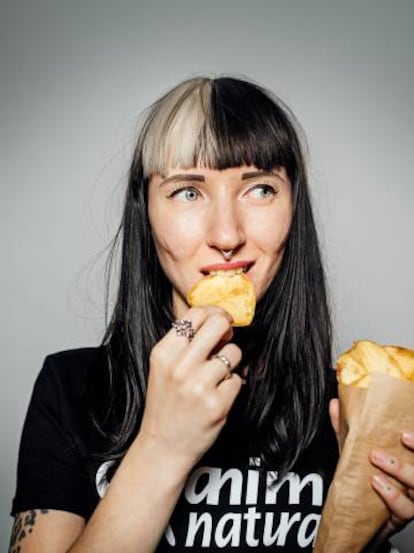
Two-thirds are female and 51.2% live in cities with populations exceeding 100,000 while most fall into the 20-to-35 age bracket.
The scientific community, including the largest collective of food and nutrition professionals in the US, the Academy of Nutrition and Dietetics, endorse the belief that a vegetarian or vegan diet, if balanced, is healthy for any age group and is suitable during pregnancy and breastfeeding. It is even perfectly adequate for athletes.
The three main reasons for giving up animal products are health, the environment and respect for other living creatures. According to the Lantern report, 17% of those who have eliminated meat from their diet fall into the health category, 21% into the environment and 57% have done so because of the empathy they feel toward animals. For most vegans, their choice is both social and political. Very often, it is espoused by those on the left, who have links with feminist and anti-war movements.

But it’s not all about clean living. Among the activists, there are plenty who indulge in junk food and don’t have a problem defining themselves as fat-vegans. “We know more than a few who base their diet on fried food,” laughs Cano. While it may not contain animal products, vegan fare can be no less processed or packed with additives.
Health concerns
In 2015, the World Health Organization caused a stir when it published a report flagging up the link between red meat and cancer, heart disease and diabetes.
At the end of 2017, the European Medicines Agency put Spain at the top of the list of countries buying antibiotics for livestock – in 2018, it had dropped to second place. Excessive use of antibiotics carries the risk of increasing the development of bacteria capable of resisting them.
But Javier López, president of the Provacuno association, says there is a legion of myths surrounding meat production these days. “An animal is only given antibiotics when it is sick,” he says. “And if a producer is caught with too many antibiotics [in his animals] by the abattoir controls, there are penalties such as disqualification, fines and jail. In any case, we are promoting variety in our food and the avoidance of extremes.”
The advantages of moderation are hard to dispute. A large number of nutritionists consulted for this article are in favor, though some such as David Mariscal, from Clínica Mariscal, a Madrid clinic specializing in endocrinology, lean further toward an omnivorous approach to food. “Animal proteins are more easily digested and give us amino acids,” he says.
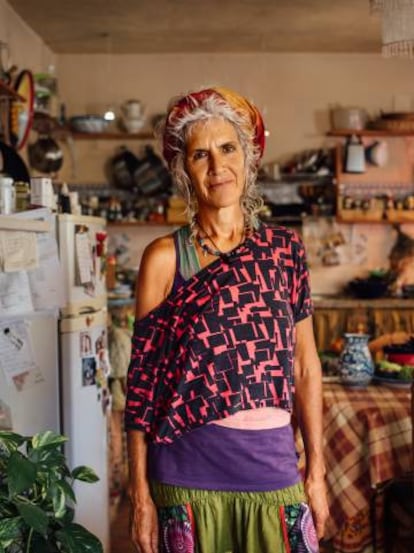
Meanwhile Salvador Zamora, professor at Murcia University, explains that “it’s easier to have a balanced diet if you include some meat each week – two or three portions – although it’s true that we eat far more nowadays than we used to and having too much protein is bad.”
But according to the Academy of Nutrition and Dietetics, the vegetarian or vegan route can actually help in the prevention of certain diseases, such as type 2 diabetes. The success of these diets depends on adequate planning, using a pyramid base of cereals, vegetables and fruit, and building upward with pulses and healthy fats. Even so, a vegan diet will almost certainly lack B12, which is found in most animal products and can be taken in supplement form.
“Together with B9 and folic acid, B12 is one of the two vitamins necessary for cell regeneration and a lack of it can cause megaloblastic anemia, which is a serious condition,” says Zamora.
But Aitor Sánchez, a nutritionist at the Aleris Center, says that “following a vegan diet is perfectly compatible with following a healthy diet; we just have to make sure we incorporate all the nutrients we need from plant-based foods.”
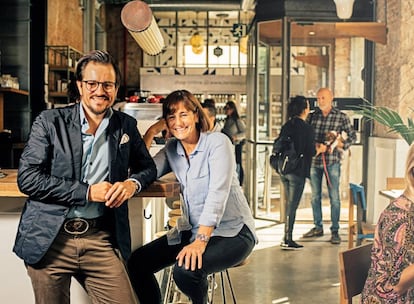
More pigs than people
For some years now, the people living in certain parts of the Spanish region of Aragón have been forced to keep their windows shut. The air is filled with a pungent smell that clings to clothes that are hung out to dry and invades homes, prompting the use of air conditioners. “It makes you gag and gives you headaches,” says Rosa Díez Tagarro, who lives in Loporzano, 10 kilometers from Huesca. The smell emanates from the industrial farms that have mushroomed in the area in recent years. In the province of Huesca, there are 3.8 million pigs compared to just 2.6 million in the whole of Andalusia. Between 2012 and 2017, the Aragónese pig population grew by 6,000 a week.
Though the local government has no official figures available, Loporzano alone has two industrial pig farms, 40,000 laying hens, and 50,000 chickens.
“There are two projects that have been paralyzed due to the application of precautionary measures, something we found out about in Aragón’s official bulletin because these farms materialize out of nowhere. There is never any warning. But two new licenses have been issued recently, though [the farms] are not yet built,” says Díez Tagarro, spokesman for the Stop Industrial Farming State Coordinator responsible for the statistics.

In 2015, locals from Loporzano decided to launch the Loporzano WITHOUT Industrial Farming platform. This gave rise in 2017 to the Coordinator, which has acted as an umbrella organization for movements in other regions, such as Aragón, Castilla-La Mancha, Castilla y León, Andalusia, Murcia, Valencia, Galicia and Catalonia, all of which have been inundated with industrial farms. The rural population is going to war and in certain cases has succeeded in freezing macro-farming projects, which require practically no manpower.
Industrial farms have spread across swathes of deserted land, despite the fact that meat consumption is in decline – in 2017, Spaniards consumed 47.6 kilograms of meat per person, which is 5% less than 2016. “But it is growing in places like China, so a lot of it is exported,” says Luis Ferreirím, spokesman for Greenpeace Spain.
The impact of intensive farming and cheap meat goes beyond a foul smell. The United Nation’s Food and Agricultural Organization (FAO) estimates that livestock, particularly cattle, are responsible for 14.5% of greenhouse gases, a figure that includes indirect sources such as the animals’ transport. No surprise then that Greenpeace is urging a 50% reduction in meat and dairy consumption by 2050. “Excessive consumption and industrial production are the main culprits of climate change, loss of biodiversity, deforestation, contamination and water scarcity as well as being responsible for the expansion of agriculture, animal abuse and increased health risks,” according to a Greenpeace report published last year entitled The unsustainable meat footprint in Spain.
“It’s impossible to imagine a world that is totally vegan or vegetarian,” says Ferreirím. “But if we could reduce the consumption of the most destructive animal products, we would have two-thirds of the benefits of a scenario in which we were all vegan or vegetarian.”
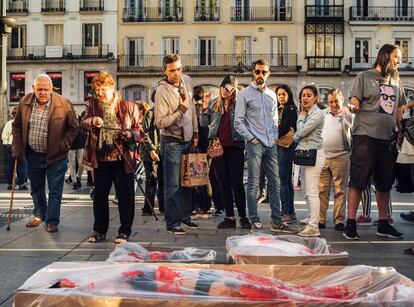
The most extensive study undertaken on the impact of livestock farming, published in May by the journal Science, revealed that an alarming 83% of the world’s cultivatable land is used to feed livestock. However, these same animals only provide people with 18% of their calorific needs and 37% of their protein. Moreover, the world’s 570 million farms have accelerated the disappearance of other species. Now 86% of mammals are either humans or farm animals. Then there is the use of natural resources: according to the FAO, 15,000 liters of fresh water are required to produce just one kilo of beef.
Another report, published in January in The Lancet, suggests that the ideal diet should not include more than 30 calories a day from meat other than poultry.
Some months ago, the news that Spain had more pigs than people went viral. A source from the Ministry of Agriculture states that this refers to the animals slaughtered in 2017 – 49 million for a population of 46.6 million. According to the same source, this year there are 30 million pigs, 7.8 million of which live in Catalonia where there are 7.4 million human inhabitants.
After years of intensive pig farming, 41% of the water systems in the region are contaminated by slurry, which in turn has a serious impact on drinking water. In Aragón, meanwhile, pigs far outnumber the human population, with seven pigs for every person – 7.8 million pigs compared to 1.3 million humans. “We also have chickens, hens, cows and turkeys,” says Díez Tagarro.
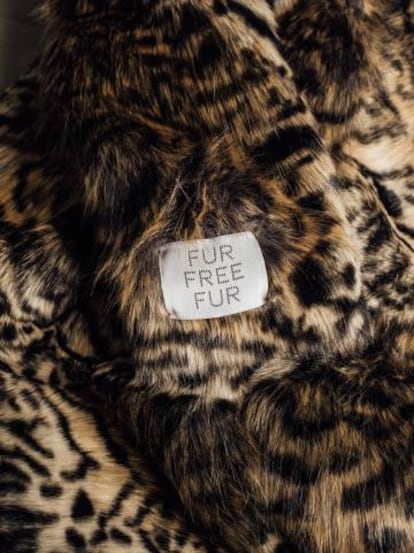
Following the money
The consumer might notice there is something of a revolution underway in the supermarkets. For example, one day Mercadona starts to sell vegetable drinks and high-protein vegan products such as seitan. The next, Aldi stocks vegan gum sweets and mayonnaise. And soon after Carrefour has shelves of vegetarian meat substitutes from brands such as Garden Gourmet.
With every decision the consumer takes, the landscape is shaped both in and beyond the supermarket. As vegetarian and vegan choices become increasingly common, a visit to a hamburger joint no longer means a meat-based meal. And apps, such as Happy Cow, allow you to organize birthday parties and weddings free of animal products.
According to Lantern, while there were 353 places offering meat-free food in 2011, by 2016, the number had risen to 703. Some are exclusive, such as the Xavier Pellicer restaurant in Barcelona, which was voted the Best Vegetable Restaurant in the World in 2018. Others are cool, such as the city’s flexitarian Flax & Kale.
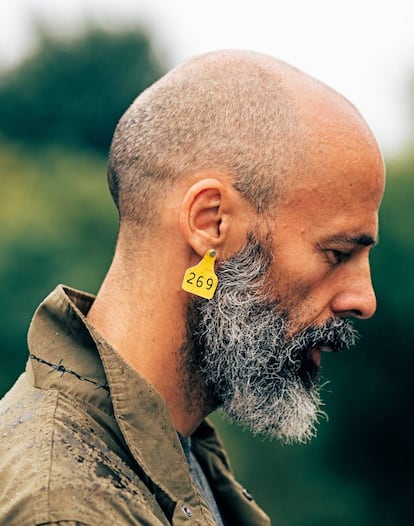
Meanwhile, bookshop shelves are packed with recipe books on vegan and vegetarian meals, not to mention what’s available online. And there are books such as Eating Animals by Jonathan Safran Foer and documentaries such as Dominion, which describe the horrors of the meat industry. Retreats where yoga is combined with vegan food are also on the rise and the vegan clothes, shoes and cosmetics industries are expanding, making it part of a lifestyle promoted by celebrities such as Natalie Portman, Miley Cyrus, Lewis Hamilton and, in Spain, Clara Lago and Dani Rovira, with Stella McCartney driving vegan fashion.
Then there are the fairs such as VeggieWorld, which takes place in October in L’Hospitalet de Llobregat, Barcelona and attracts around 7,000 visitors and dozens of exhibitors, promoting everything from cashew nut cheese and spicy sausage made from pumpkin, to vegan steaks.
Action
It is 8am and 25 people are marching along the path leading to the abattoir in Getafe, Madrid. They are mostly young girls and boys, some with an alternative appearance. But there are also older people, including a 58-year-old civil servant. All belong to The Save Movement.
When trucks come in, they ask the drivers to stop so that they can give the animals water. “Did you know they haven’t been given anything to eat and scarcely anything to drink so that their stomachs are empty when they are slaughtered?” says one girl.
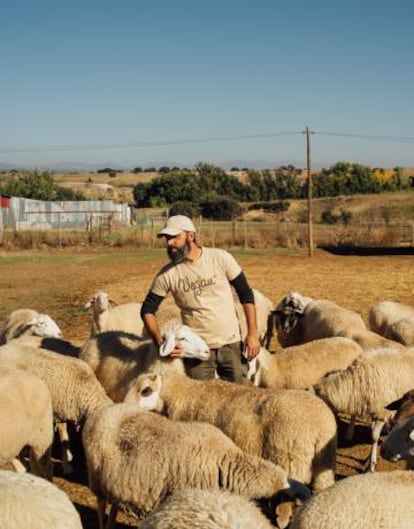
Some days later, a number of those who were at the abattoir pop up in the center of Madrid with their faces masked, protesting for Anonymous for the Voiceless. They hold laptops that show scenes of animals suffering and try to persuade the public to stop looking the other way, according to a protestor named Ricardo.
A lot of the animal activists belong to more than one movement. There is the chalk challenge whereby they gather under the umbrella 269 movement, a number that some have actually branded onto their arms while others wear it on a livestock tag that hangs from their ear. They draw pictures of sheep with chalk on the pavement with slogans such as Don’t eat your friends and Why would you love your dog but eat a steak?
Animal rights groups took off in the 1970s. Organizations such as PACMA work on getting legislation passed in parliament. Others, such as Igualdad Animal, protest against animal abuse and would like to see meat production relegated to history, arguing that all living creatures have rights. But street protests that include visits to abattoirs are definitely a new thing and they are increasing all the time. This coincides with rise in the number of animal rescue sanctuaries, with around 20 emerging in the past few years.
And finally
In October 2018, the UN stated that the world has just 12 years to start limiting the effects of climate change. If something isn’t done, by 2030 we will be experiencing devastating hurricanes, floods, mass migration and famine. According to experts, the solution lies in taking unprecedented measures to limit the rise in the global temperature to 1.5ºC. One of these measures involves reducing meat consumption.
The good news for ham fans is that the search for alternative ways of feeding the 10 billion humans that will inhabit the planet by 2050 is already underway. Fake meat fashioned from plant products has an increasingly real texture and flavor. And by using the stem cells from animals, a substance known as “clean meat” has been developed, so that perhaps in the future, vegans will not have to take meat off the menu after all.
English version by Heather Galloway.

